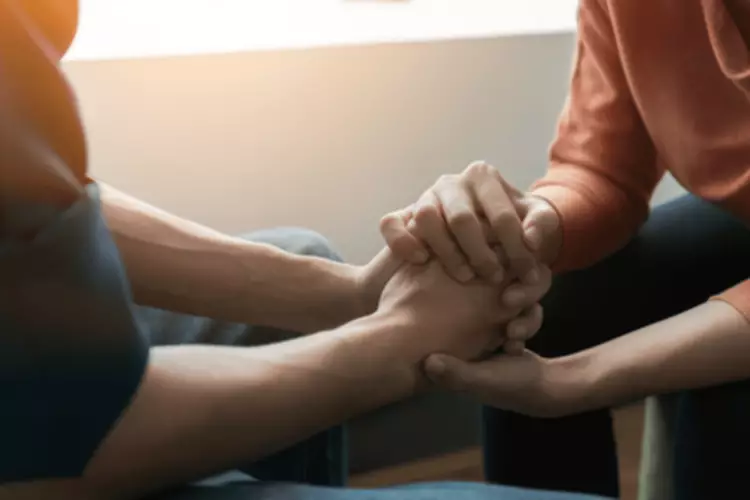Depending on your resources, you could help participants to make plaster masks from scratch or purchase some pre-made blank masks. Often, in dealing with adult problems, it’s even harder to articulate what hurts and why. https://ecosoberhouse.com/ With this project, participants are softened by the act of collage, rendering painful things into pleasant things. Humans are all tactile creatures, but children especially are touchers, explorers, and curious feelers.
- Glue the phrases onto the cardboard to create a collage of positive, self-healing words.
- Endurance athletes are a prime example; stage performers carry similar characteristics.
- In my experience, it’s most helpful to leave some parts of the activity open-ended.
- In other words, don’t specify what kind of bridge or body of water they should depict.
- For example, when I was in grad school, our studio art therapy professor asked us to make a box out of cardstock that represented our memory bank.
Color your feelings
- This activity can be conducted with individuals or in a group and was devised by music therapist Paula Higgins.
- If you’re exploring different therapy techniques or resources in your journey toward sobriety, understanding the benefits of art therapy can be incredibly insightful.
- A lot of research shows that meditation is good for health.
- Give them a moment to reflect on what activities, people, or things help them feel good.
- Exercising creative expression through art is a non-invasive way to put emotions back into place and begin to heal.
- Making your own thank-you cards by painting, drawing or embellishing a stack of blank cards will make a lasting impact on you and recipient.
Names, demographics, and other identifying information have all been changed in order to protect client identity, confidentiality, and privacy. The information presented in each example is for educational purposes only, intended to illustrate a concept, technique, or activity. In therapy, Jane drew her unhelpful view of the problem as a dark, messy art therapy for addiction blob of lines and jagged shapes. The meaning machine she created was made of clean, round shapes and bright colors. After “sending†her old view through her meaning machine, a large heart filled with brightly-colored segments “came out†the other side. Reframes can honor and highlight the client’s mission versus focusing on the negative.
Training in Expressive Arts Therapy
The picture must be drawn, alternately passing the task to the next participant. Exercise develops empathy, goodwill towards each other. At its core, art therapy is a therapeutic technique rooted in the belief that creative expression can foster healing and mental well-being. It’s not about producing gallery-worthy artwork; rather, it’s about using your creativity as a tool for communication, self-expression, and problem-solving.

Ways Art Therapy Can Help Treat Addiction

In art therapy sessions, your art therapist will introduce you to a variety of art forms – from painting and drawing to sculpting and collage-making. It’s selected based on your personal preferences, needs, and the therapeutic goals you’re working towards. The creative process itself becomes a safe space for expression. You’re encouraged to visualize and give form to your inner world, with no emphasis on the artistic quality of the output. Yes, art therapy can help treat addiction from substance abuse. The practice provides a creative outlet for people to express their thoughts, feelings, and experiences through various art forms.
The Healing Power of Art Magazine – MoMA
The Healing Power of Art Magazine.
Posted: Fri, 17 Sep 2021 14:21:07 GMT [source]
Completing monotypic casts on a separate sheet with a search for deep saving meanings is a very effective art therapy crafts. A drawing is created when paint is added to a non-dried background and shaded with a sponge or a wide brush. In this way, it is convenient to draw sunrises and sunsets, as well as the coloring of animals. This exercise develops imagination, relieve emotional stress. For the color splashing technique, use a comb, brush, or toothbrush.
Addiction Destroys Dreams, We Can Help
Feelings and associations related to the pain can get jammed up, repressed, or acted out/expressed in less than desirable ways. When they are finished, give them a chance to present what they have created. Ask open-ended questions about what you see and also offer up any “noticings†that occur to you about their process, product, and symbols. Be mindful not to assign your own meaning without allowing the client to do so first.
- You might be surprised that on some days I wake up wondering what the heck art therapy is because so much misinformation about it abounds on a Google search.
- Enhancing communication skills is another significant benefit.
- Below are five activities for adults that can provide an opportunity to help them better understand themselves.
- Creative expression can aid in slowing some of these responses.
- It offers a way to work through tough issues that can’t be put into words or written down.